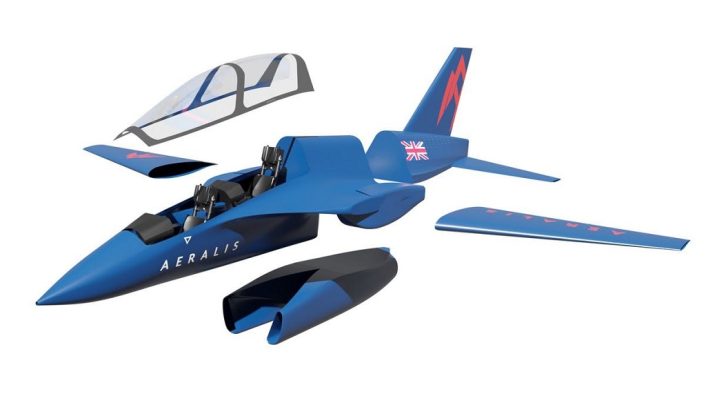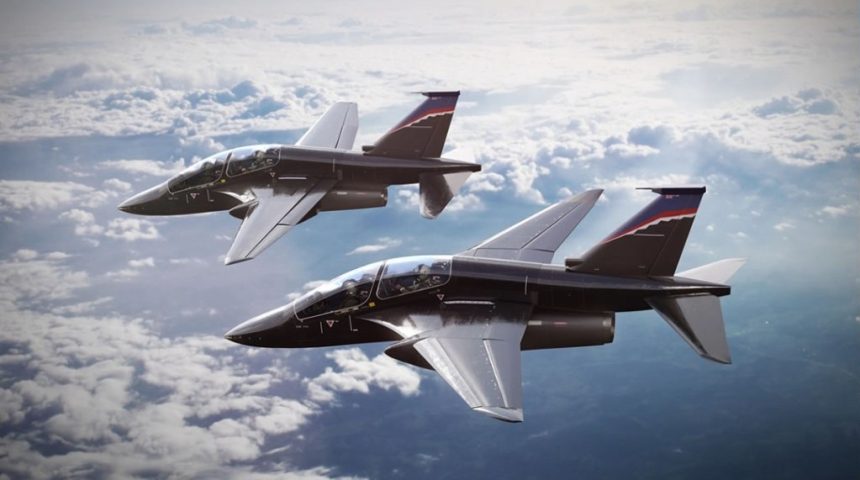Aeralis project, supported through the Rapid Capabilities Office, revolves around a common fuselage with interchangeable engines and wings.
The British company Aeralis has been awarded last month a three-year contract by the United Kingdom Ministry of Defence to continue the development of its modular jet trainer aircraft with the support of the Royal Air Force Rapid Capabilities Office (RCO). According to Tristan Crawford, Chief Executive Officer of Aeralis, this aircraft will be the first to be fully developed in the UK, without international partnerships, since the BAE Hawk in 1974.
“The RCO will support the requirements and design review process to gain an understanding of how Aeralis defines the ways in which agile, modular, commercially-driven aircraft design can develop and certify a broad range of future aircraft systems that could support the RAF’s ambition to rationalise its future fleet”, said the company.
The value of the contract has not been disclosed, however The Times newspaper reported it to be £ 200,000 (278,000 USD). According to the company, the support from RAF “demonstrates the great confidence placed in British innovation and ingenuity for a project which has the potential to reinvigorate British aircraft manufacturing using the wealth of infrastructure and expertise that already exists in the UK.”
The project aims to reduce the complexity and the costs of acquisition and sustainment via an innovative digitally-driven development and the certification of flexible, open-architecture aircraft systems, applying lessons learnt from the commercial sector and using components coming only from British companies.
The design revolves around a common fuselage and interchangeable engines and wings. Aeralis expects the reconfiguration of the aircraft to happen within a normal 24 to 48-hour maintenance cycle. Currently, three variants have been proposed: a basic two-seats jet trainer capable of Mach 0.65 with a wingspan of 11.2 m, an advanced two-seats jet trainer capable of Mach 0.85 with a wingspan of 10 m, and an aggressive single-seat jet trainer capable of Mach 0.95, with a wingspan of 9 m. All configurations will have an 85% commonality of components.

An exploded view of the modules which compose the design being developed by Aeralis. (Image: Aeralis)
The company did not provide other details about the performances and the engines. From the renderings released to the press, however, it looks like the aircraft could be both in a single engine or a twin-engine configuration, according to the operator’s requirements.
In a rendering published by the Daily Mail newspaper, the aircraft was indicated as being equipped with Large Area Displays (LAD), Helmet Mounted Displays (HMD), tailorable computers, datalinks, synthetic training systems and biometric sensors, in addition to the aforementioned digital backbone and open architecture.
A similar design seems to be unprecedented, as highlighted by Deputy Chief of Defence Staff, Air Marshal Richard Knighton: “This private aircraft company is adopting an innovative approach that I have not seen before in the combat air sector. Its ingenious and innovative use of modularity, together with applying lessons learnt from the commercial sector offers the potential to break the capability cost curve that has dogged military fast jet programmes for many generations.”
In a statement released to British newspapers, a RAF spokesperson said they have no plans to replace the Hawk with this new design by Aeralis. The cooperation will be in fact purely explorative, as noted by Air Commodore Jez Holmes, the Head of the RAF’s Rapid Capabilities Office: “We are pleased to be working with Aeralis to explore the modular air-system approach to future aircraft certification, design and development and, in particular, to understand the exploitation potential of PYRAMID, our new open mission system architecture.”
The modular system, which the company says it will be designed to “streamline the design, development and in-service support processes for military aircraft across multiple training and front-line roles”, could also evolve in a fuel tanker for swarms of drones, an ISR (Intelligence, Surveillance and Reconnaissance) aircraft or an unmanned attack aircraft.
This week Aeralis announced a Teaming Agreement with Thales in the UK to develop innovative philosophies, processes, devices & systems to operate the new aircraft, with a particular focus on the training systems though its well-established Training and Simulation division that designs and operates synthetic flight training simulators, such as those used at the RAF’s Voyager and Atlas training facilities at RAF Brize Norton.









